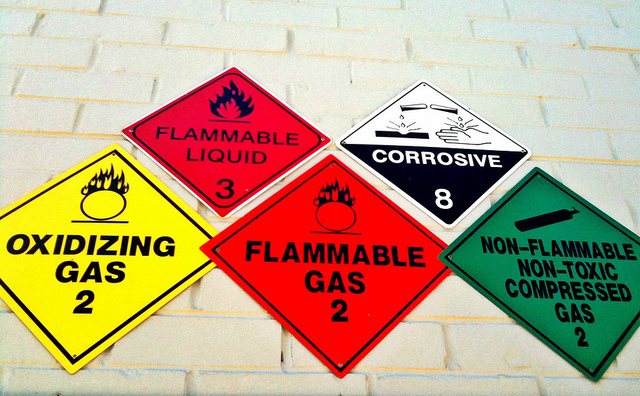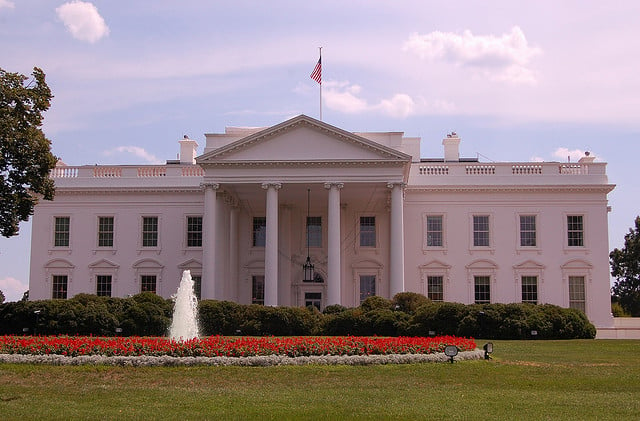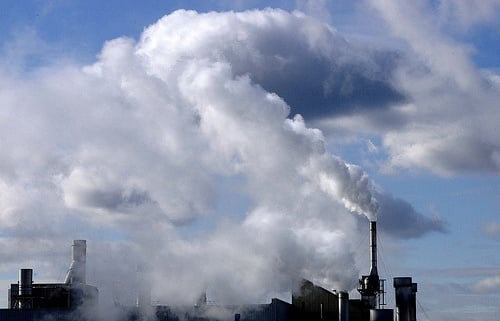The federal Superfund law (Comprehensive Environmental Response, Compensation, and Liability Act (CERCLA) of 1980) defines broad categories of parties who might be deemed responsible for chemical contamination (“responsible parties”) and liable to pay for some or all the costs o cleaning up. Nearly 45 years after CERCLA was first enacted, a federal Court of Appeals has confirmed for the first time that a party that “arranges for” disposal can be liable for cleanup costs
, even if there’s no evidence that the party knew that the materials being disposed were hazardous. Although this ruling is consistent with the statutory text and decades of practice, it’s still the first formal ruling by an Appeals court (68th Street Site Work Group v. Alban Tractor Co.). The rest of this note summarizes “arranger-for” liability, and this case.
Read More
Tags:
Health & Safety,
EPA,
Safety and Health at Work,
CERCLA,
Hazardous Chemicals,
Hazardous Material
The Occupational Safety and Health Administration (OSHA) establishes Emergency Response planning, training, and procedure requirements for employers, as one self-contained part of its multi-pronged Hazardous Waste Operations and Emergency Response (HAZWOPER) Standard (29 CFR 1910.120). This note describes these requirements, and places them in the context of a variety of emergency response planning requirements.
Read More
Tags:
Health & Safety,
OSHA,
Safety and Health at Work,
workplace safety,
Hazardous Waste
The Occupational Safety and Health Administration (OSHA) is authorized to inspect regulated workplaces, although it generally inspects only workplaces deemed highly hazardous (which typically are targeted sector-wide by OSHA National Emphasis Programs (NEPs) or their regional or state equivalents), or those subject response to complaints or reported incidents of injury or illness (I&I). On April 1, OSHA revised provisions in its inspection standard (29 CFR 1903) clarifying which “employee representatives” can accompany an inspector during a walk-around; the revisions are to become effective on May 31. This revision reflects part of broader inspection revisions proposed on August 30, 2023 (which I wrote about HERE). The rest of this note discusses the change to walk-around provisions.
Read More
Tags:
Health & Safety,
OSHA,
Safety and Health at Work,
workplace safety
On March 11, the Biden Administration issued its budget proposal for federal Fiscal Year (FY) 2025 (October 1, 2024 through September 30, 2025). The administration proposes a $655.5 million budget for the Occupational Safety and Health Administration (OSHA), a 3.7% ($32.1 million) increase above OSHA’s adopted 2023 budget of $632.4 million (the Administration had proposed $701 million). OSHA is presently operating under the latest FY 2024 Continuing Budget Resolution (since no budget has been adopted for FY 2024 (I wrote about the Administration’s FY 2024 proposal HERE). Even if an FY 2025 budget is enacted, political differences make significant reductions from this proposal likely, but it’s worth reviewing the proposal as a reflection of the Administration’s ongoing environmental priorities. The remainder of this note summarizes the Biden Administration proposal.
Read More
Tags:
Health & Safety,
OSHA,
Safety and Health at Work,
Cal/OSHA,
FTE,
Joe Biden,
USA
On March 1, 2024, the Environmental Protection Agency (EPA) revised Accidental Release Prevention (ARP) program rules under the Clean Air Act (CAA). ARP was authorized by the 1990 Clean Air Act (CAA) Amendments, and is often known by its core requirement that targeted facilities prepare Risk Management Programs (RMPs) to prevent and respond to potential catastrophic releases of chemicals. The adoption finalizes an agency proposal from 2022 (it also recounts a long series of proposal dating back to 2014; I wrote about it HERE), in which the Biden-era EPA proposed to many of the narrowing amendments to RMP/ARP enacted in 2019 during the Trump Administration (I wrote about the 2019 changes HERE).
The rest of this note summarizes the new revisions, noting their differences from current rules.
Read More
Tags:
Health & Safety,
EPA,
CAA,
chemical safety,
Air Toxics,
Clean Air Act,
Toxics Release
This is the time of year when employers in many parts of the continent should be making focused effort to protect workers against winter weather. Occupational safety and health regulators include environmental and ambient hazards among those that employers must consider as part of their “general duty” to protect workers against recognized hazards. Requirements cover potential harm from extreme temperatures including cold, as well as slippery surfaces and other hazards from frozen and melting snow or other precipitation.
Agency regulations cover many specified types of situations, and guidelines are available for more. For example, the U.S. Occupational Safety and Health (OSHA) is drawing attention to its “Winter Weather” webpage as a source of information. The rest of this note summarizes information from OSHA’s webpage and those of other occupational safety agencies.
Read More
Tags:
Health & Safety,
OSHA,
workplace safety,
Winter,
Weather
Saskatchewan’s Employment Act (SEA) requires employers to take action to protect their employees against workplace violence. Since 1997, express requirements have applied to workplaces “prescribed” by regulations based on higher hazards; effective on May 17, 2024 these requirements apply in all workplaces, implementing SEA amendments enacted in 2023 by Bill 91 (“The Saskatchewan Employment (Part III) Amendment Act, 2022”). The rest of this summarizes workplace violence prevention (WVP) requirements set forth in the SEA, and in regulations issued and administered by the Occupational Health and Safety (OHS) Division of Saskatchewan’s Ministry of Labour Relations and Workplace Safety.
Read More
Tags:
Health & Safety,
Workplace violence,
Safety and Health at Work,
workplace safety,
safety violations,
OHS,
SEA
The Occupational Safety and Health Administration’s (OSHA’s) Standard for Process Safety Management of Highly Hazardous Chemicals (usually referred to as “PSM”) requires extensive risk assessments and reduction efforts by facilities where a significant incident involving these chemicals might have catastrophic consequences. OSHA adopted PSM in 1992, and has made only minor technical revisions in the ensuing three decades. OSHA has also issued enforcement guidance to its inspectors, which it had not revised since 2012. However, in December 2023 OSHA issued an extensive new PSM enforcement policy, most of which is formatted in a total of 192 Questions and Responses designed to guide enforcement – and compliance that can obviate enforcement. The remainder of this note provides a very brief summary of the 120 page Enforcement Policy document.
Read More
Tags:
Health & Safety,
OSHA,
Safety and Health at Work,
workplace safety,
chemical safety,
PSM
On December 21`, 2023, the Occupational Safety and Health Administration (OSHA) announced a notice of proposed rulemaking (NPRM) to develop an Emergency Response Standard that will update, expand and supersede OSHA’s existing Fire Brigades Standard. The new standard will extend detailed OSHA protections to additional emergency responders, including not just firefighters but also emergency medical service providers and technical search and rescue workers. The rest of this note describes these proposed changes.
Read More
Tags:
Health & Safety,
OSHA,
Fire Prevention,
Fire Safety,
NPRM
On November 22, the Occupational Safety and Health Administration (OSHA) issued a Safety and Health information Bulletin (SHIB) discussing “safety helmets” as evolved alternatives to traditional hard hats, and offering recommendations for situations where employers should switch. On December 11 the agency announced that it’s following its own advice and replacing its own employees/inspectors hard hats with safety helmets. The rest of this note discusses OSHA provisions for personal protective equipment (PPE) providing head protection, and the rationale and examples of the benefits of upgraded headgear.
Read More
Tags:
Health & Safety,
OSHA,
Safety and Health at Work,
workplace safety







